Release Notes: Altair Feko 2018.2
Altair Feko 2018.2 is available with new features, corrections and improvements. It can be applied as an upgrade to an existing 2018 installation, or it can be installed without first installing Altair Feko 2018.
Highlights of the 2018.2 Release
The most notable extensions and improvements to Feko and WinProp in the 2018.2 release.
Salient Features
- Periodic boundary conditions (PBC) supported with FEM and significant performance
improvements to PBC simulations.
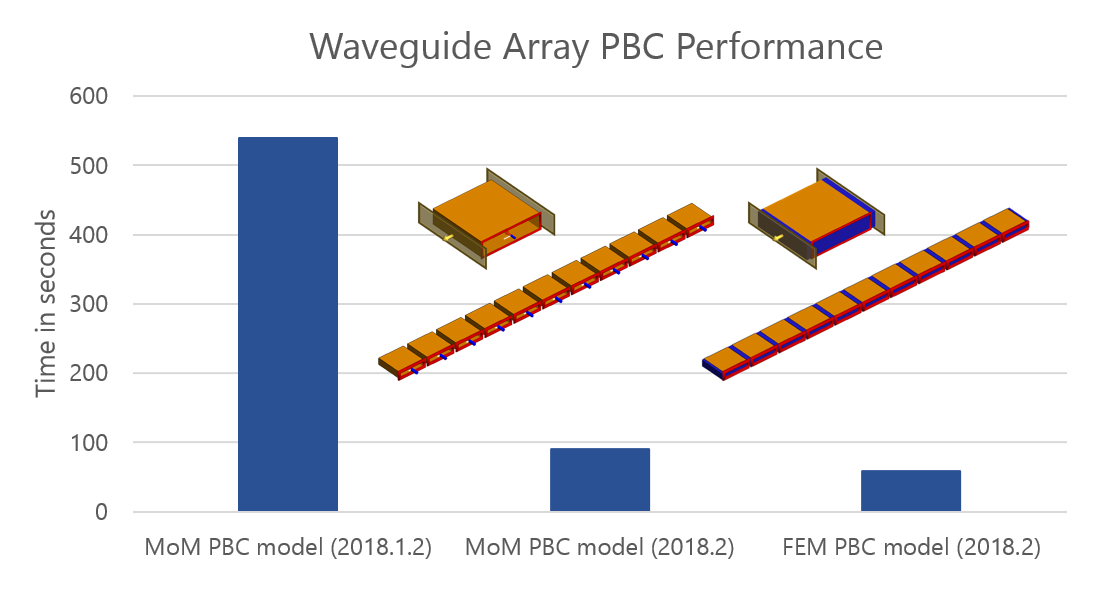
Figure 1. An 11x1 waveguide array solved at 1.645 GHz. The image shows the performance of the MoM PBC array solved with Altair Feko 2018.1.2 compared to the MoM PBC array solved with Altair Feko 2018.2 and the FEM PBC array solved with Altair Feko 2018.2. The PBC unit cells for the MoM and FEM models are shown as inserts with the 3D views of the models. The simulations were completed on a standard desktop computer (Intel® Core™ i5-4690 CPU @ 3.50GHz). - Improved RL-GO curvilinear ray tracing speed.
- Improved POSTFEKO performance with faster loading times for large result and session files and faster time analysis of continuous frequency results.
- Support for double cable shields and braid formulations in CADFEKO.
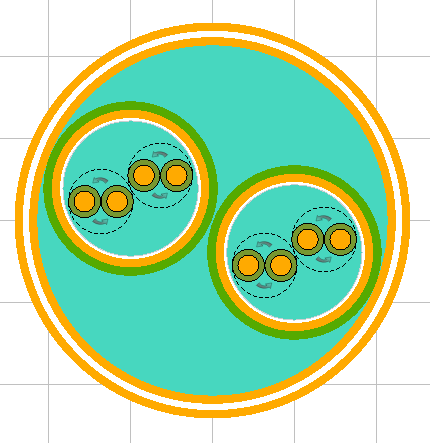
Figure 2. CADFEKO cross-sectional view of a cable bundle with double shields. - Improved loading options to be more consistent for various solution methods.
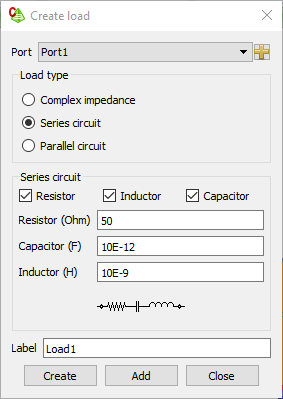
Figure 3. The Create load dialog now shows an image of the resulting circuit. - Option to use new or keep existing ports and sources when unlinking a mesh.
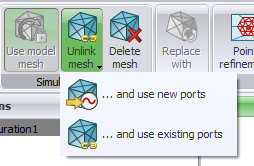
Figure 4. New unlink mesh options. - Ability to simulate automotive radar in WinProp.
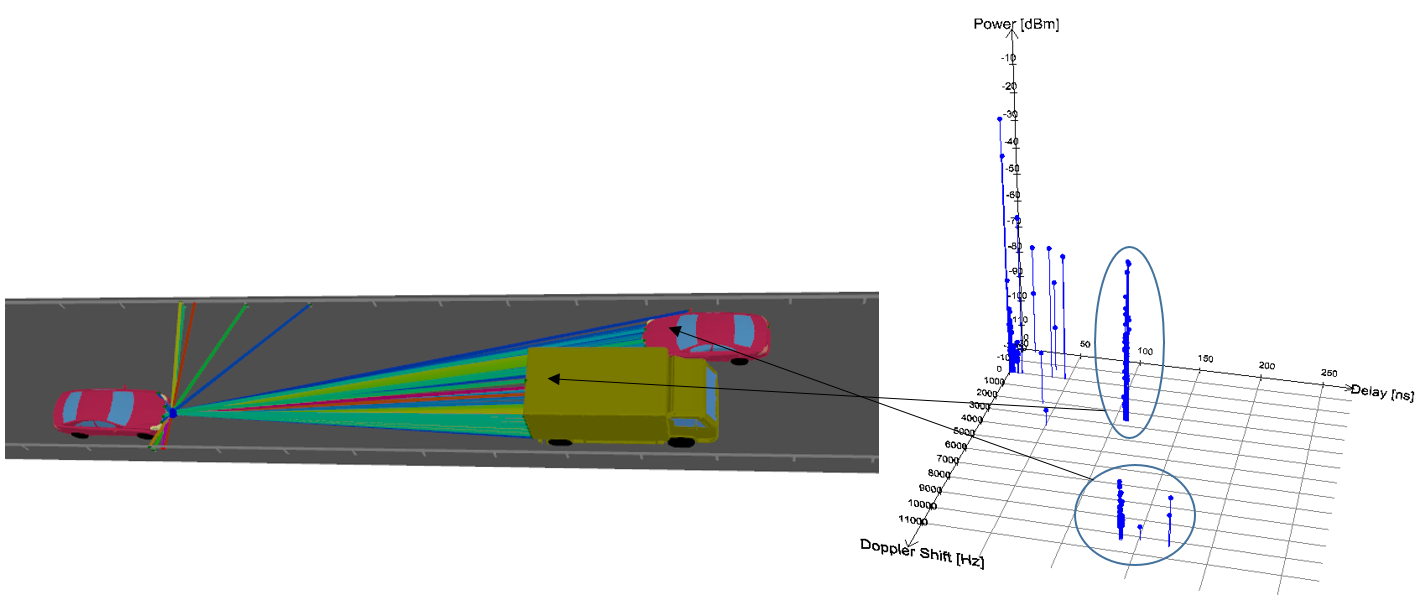
Figure 5. An automotive radar simulation in Altair WinProp. - WinProp application programming interface (API) under Linux.
Feko 2018.2 Release Notes
The most notable extensions and improvements to Feko are listed by component.
CADFEKO
Features
- The shield insulation coating is moved to the coaxial cable and bundle dialogs. Validation for the stretching range of a braided shield is added when applying a braided shield to a coaxial cable or bundle.
- It is now possible to specify the transfer capacitance to approximate the admittance part of a cable shield definition.
- Added support for the Tyni and Demoulin braid formulations in addition to the Kley and Vance methods for a braided shield. Furthermore, the optical coverage definition is added to specify the size of the apertures for a braided shield. The weave angle definition was extended to include a weave angle deviation to take into account possible variations in the weave angle when the shield is stretched. A maximise optical coverage optimisation method is added to maximise the shielding when applying the shield on a coaxial cable or cable bundle. The weave angle and shield radius can also be specified manually if the weave angle is different from the optimal value determined from the maximise optical coverage optimisation method.
- Added direct support on the cable shield dialog to define double-layered shields.
- Added support for the surface impedance definition for a frequency dependent shield to take on a low-frequency braid-approximation (Zs=Zt), manually specify the data or load the properties from a file. Interpolation methods (Constant, Linear, Cubic spline and Rational) are added to the transfer impedance, surface impedance and transfer admittance definitions for a frequency dependent shield.
- Improved the unlinking of meshes by introducing an option to transfer sources, loads and other solution entities to the ports on the unlinked mesh. The old behaviour to keep using existing ports is retained as an alternative option.
- Improved the Create load dialog to clarify that the impedance calculation does not include zero-value elements. A resistor, capacitor and inductor can now be added or removed from the load circuit by toggling checkboxes on the dialog. A newly introduced image on the dialog updates to show the resulting schematic circuit.
- Extended far field requests to support the Cartesian coordinate system to define points on a regular Cartesian grid. This is in contrast to the default regular theta/phi grid requested when using spherical coordinates.
- Added an option to choose whether the port reference is absolute or relative when defining a non-radiating general network with a SPICE circuit.
- Series and parallel circuits are supported for loads on vertex, microstrip and network ports (in addition to complex impedances).
Resolved Issues
- Corrected CEM validation to allow current sources with the incident power scaling (transmission line model) power scaling option.
- Improved periodic boundary condition tests for finding matching faces on corresponding boundaries by increasing the tolerance.
- Fixed a regression introduced in FEKO 2018. Curved UTD faces are once more discretised into triangles when symmetry is applied.
- The cable path identical distance is reduced from 1e-4 to 1e-6. This allows cable end points to be located 100 times closer to each other than in previous versions.
- Resolved an issue with configuring Braided (Kley) cable shield method when setting different inside and outside dielectric braid-fixing material.
- Corrected a CEM validation check that failed with the warning No sources have been defined in the model when the voltage source magnitude was set to a value smaller than 0.5 V.
- Corrected the CEM validate check to allow free space MoM regions with VEP dielectric regions.
- Corrected an issue with CADFEKO model import. After importing a .cfx file, automatic meshing was unable to complete until a change was made to the model frequency.
- Resolved a meshing issue where a non-uniform surface mesh was generated close to a symmetric wire with ports located normal to the plane of symmetry.
- Excluded windscreen reference triangles from mesh intersection checks. These elements only define a reference position and do not form part of the solution. It does not result in a simulation error when these elements intersect with other elements.
- Prevented warnings from being issued when saving a model containing valid finite conductivity faces defined on a FEM PEC region.
EDITFEKO
Features
- Extended the FF card to allow using the Cartesian coordinate system when requesting far fields.
- The SPICE Circuit (SC) card is added to EDITFEKO. This card defines a 1-port SPICE circuit for subsequent use in load cards (L2, LC, LE, LF, LN and LZ).
- Additional load options (specifying a SPICE, series or parallel circuit) are available on the L2 and LN cards.
Resolved Issues
- The “Include tetrahedral elements” flag is now on by default when adding an IN card in EDITFEKO.
POSTFEKO
Features
- Extended POSTFEKO to support far fields specified in Cartesian coordinates.
- Added support for loads specified using 1-port SPICE circuits (SC card).
- Improved the handling of HTML styling applied to graph captions and text via the API.
- Added support for characteristic modes requests with looped plane wave sources.
Resolved Issues
- Improved the time analysis calculation speed for continuous frequency results. Some examples show speed improvements of up to 20 times.
- Resolved a performance issue when loading large POSTFEKO session files. The loading times of large .pfs files are significantly reduced.
- Windscreen layers and wire coatings are now displayed correctly in POSTFEKO regardless of the model unit.
- Corrected FEM load handling to consider two loads with different orientations to be the same load instead of two different loads. The second load would replace the definition of the first load.
- Resolved a crash when attempting to export S-parameters or arbitrary near field points to a .mat file.
- Resolved an assertion that failed with index < pBlock->nports when attempting to view the data for the second port of a non-radiating network.
- Added additional error checks to the .ini file reading process to give an error and reset the .ini file instead of failing to start the application.
- Fixed axis support is added for the transmission/reflection coefficient collection in the API.
- The axis for S-parameter DataSets can now be referenced as S-parameter in the API. Similarly, the alias MediumNames is added on the metadata of Near Field DataSets and PortNumber for the axis listing the port number on a Network DataSet. These axes were previously accessed as “Arbitrary” axes. Backwards compatibility is maintained, allowing the use of either Arbitrary or the new names when accessing the data.
- The ModalExcitationCoefficientIsCalculated flag is moved to the metadata of characteristic mode datasets in the API. The ModalExcitationCoefficient quantity is now only added to the dataset when it is requested. In the past, the value of was added to the ModalExcitationCoefficient quantity when it was not requested in the simulation.
Solver
Features
- Updated the minimum number of unknowns for which a model can be solved efficiently with ACA to 10000.
- Support periodic boundary conditions for dielectric bodies with FEM.
- The quality of the MLFMM load balancing between the different processes in a parallel run is now written to the .out file. This feature can be used with the --check-only option (thus not solving the model).
- Significantly improved the performance of all simulations involving periodic boundary conditions (PBC). The performance is improved by one to two orders of magnitude while maintaining accuracy.
- Improved intersection checks between rays and geometry meshed with curvilinear triangles, leading to a significant speed-up of the ray launching/tracing phase of RL-GO. Further improved robustness of tracing rays close to grazing incidence.
- Improved the accuracy of RL-GO with adaptive ray launching settings.
- Improvement of the accuracy for the asymptotic RL-GO solver when impressed sources (including aperture sources) or MoM regions are very close to RL-GO region, as well as run-time reduction for the MoM / RL-GO hybrid method. As a result of this improvement, ray amplitudes exported to the .bof and .ray files now reflect the magnetic field strength along the ray path, no longer the electric field strength.
- Added support for the calculation of modal excitation coefficients for all angles of a plane wave with multiple angles of incidence during characteristic mode analysis.
- Improved the efficiency of computations involving loads defined on an edge, a vertex or a FEM load, defined in multiple configurations. Data calculated from a previous configuration get re-used if the loads do not change.
- Support far field computations in a Cartesian UV grid.
- Support the use of a general non-radiating one-port SPICE circuit as a complex load applied to a port (segment, vertex, edge, cable, network or FEM line port) in frequency domain solvers.
- Support SPICE circuits with pairwise relative port references connected to a non-radiating general network.
- Support series and parallel RLC loads applied to a wire port that is defined on a vertex.
- Support series and parallel RLC circuit loads applied to a non-radiating network port.
- Parallel processing of geometry intersection checks is supported and the progress output is updated during this phase.
- Memory usage is now consistently reported at the same location in standard output and the .out file when iterative solvers, such as FEM or MLFMM, are used.
Resolved Issues
- Fixed a bug that led to an error state during a solution with adaptive cross-approximation.
- Single or double precision data storage information is now written to the .out file for ACA.
- Corrected the logic when configuring solution settings involving general network ports.
- Improved the performance of the interpolation phase of a PBC solution by two orders of magnitude on average.
- An error message is now issued for a PBC model containing curvilinear segments.
- Removed a note that was issued if all triangles in the mesh of an RL-GO model are found to be planar despite curvilinear meshing being enabled.
- Added geometry intersection tests between cable paths and a PEC ground plane.
- Added a check for the consistent definition of microstrip edge ports with associated load or excitation across all configurations.
- Resolved a bug that led to an internal error state when computing SAR by improving tolerances used in identifying the medium of an observation point.
- Fixed a bug that led to a parallel deadlock during the geometry checking phase of the solution of a closed surface modelled with CFIE.
- Resolved a circular dependency in the memory initialisation of RL-GO
- Restricted the check for a metallic surface in a mixed FEM/MoM model with connected FEM and MoM regions to the FEM/MoM boundary.
- Refined the grazing angle threshold to improve the accuracy of RL-GO with adaptive ray-launching settings for models with spherical mode sources near RL-GO surfaces.
- Do not print a warning when there is a CUDA driver mismatch if GPU usage is not requested.
- Fixed a bug that led to a memory error state on Windows for a cable model with capacitor connections to ground.
- Fixed a bug in the calculation of modal input power during a characteristic mode analysis solution.
- Fixed a bug in the calculation of network losses in models with more than one configuration.
- Fixed a bug that led to an error state when parallel computations are executed on Windows on some CPUs.
- Fixed a bug that led to an error state when estimating the condition number in parallel in Windows.
- Fixed inconsistencies in recovering a corrupt or incomplete .str file between processes, in a parallel simulation. Current file recovery is now exclusively handled by the main process.
- Improved the handling of non-radiating networks, through abstract representations, and increased the efficiency of the solution. As a by-product, a series load at a port, where a non-radiating network is also attached, is now allowed when S-parameters are requested.
- Improved the handling of Touchstone data embedded in a SPICE circuit that is included in a non-radiating general network, resulting in a significant reduction in simulation time.
- Corrected an error in the logic to use the fast far field method for RCS calculations with RL-GO.
- Corrected text related to the number of MoM basis functions reported in the .out file for an RL-GO only model.
- Improved MLFMM memory management and the accuracy of the reported memory usage of the near field matrix when the SPAI pre-conditioner is used.
- Changed the MoM treatment of an RLC circuit load with all three components equal to zero to evaluate to an open circuit. The usage of such loads in a model now results in an error.
- Improve message reported in the .out file when intersections are detected to indicate possible causes.
- Fixed a bug that resulted in an error state when updating the percentage progress output of a time domain solution.
Shared Interface Changes
Support Components
Resolved Issues
- Replaced the PREFEKO triangle-based meshing by a polygon-based meshing solution.
- Extended the User Guide and Installation Guide on where to download the feature updates/hotfixes and how to correctly set up a local repository to prevent receiving the error that the manifest.xml.gz file could not be found.
- A new section on “How-Tos” is added as an appendix to the Feko User Manual. In this section, steps are provided to address specific, often more advanced, problems.
- Added information on how to create a response file for silent mode installations. This information was missing in the 2018.1 Installation Guide.
WinProp 2018.2 Release Notes
The most notable extensions and improvements to WinProp are listed by component.
General
Resolved Issues
- Fixed a bug that prevented the automated use of OptMan.
ProMan
Features
- Support for pre-processing of databases for IRT has been extended to time-variant scenarios in WallMan. IRT simulations in ProMan now also support time-variant scenarios.
- Extended post-processing of mobile station propagation results to time-variant scenarios in area-wide and point modes.
- Significantly improved the workflow of MIMO network planning by having all results provided in one simulation.
- WinProp radio channel data can be exported to the ASCII format supported by Keysight PROPSIM.
- Doppler shift calculation is available for time-variant scenarios. The Doppler shift data is included in the .str file and can be displayed on 2D and 3D plots.
- Adaptive orientation of a transmit antenna (azimuth, down-tilt), attached to a moving part of a time-varying database according to the trajectory of the moving object, has been added.
- Added support for prediction points and prediction planes at multiple prediction heights during post-processing of mobile stations.
- Antenna pattern resolutions smaller than one degree are now supported.
- Support for radar channel results for multiple frequency bins is now added to the post-processing utility, RunMS. Multiple frequency results, at the receiver, are now obtained in one simulation run.
- Added support for post-processing results in horizontal planes at multiple prediction heights in indoor scenarios.
- Included effects of the gain of the mobile station antenna in the ray data written during mobile station post-processing.
- Improved accuracy and usability for mobile station post-processing by disabling adaptive resolution management, by default, for all scenarios.
Resolved Issues
- Corrected the behaviour of ProMan to issue an explicit error message in case a failure occurs when checking a license.
- Fixed a regression that led to incorrect coherently superposed power results when using the Standard Ray Tracing method.
- Fixed a bug that led to a crash when viewing the channel impulse response of a time-variant project.
- Fixed a bug that led to a crash when displaying channel impulse response over a topological vector database.
- Fixed a regression that led to a crash during network planning simulation with a rural database.
- An additional mean-value result was added, for which logarithmic results are first converted to linear before the mean is taken. The mean is then converted back to dB.
- Fixed a bug in the consideration of the azimuthal orientation of a single receiving antenna.
- Corrected a bug in the consideration of the gain of the antenna at the mobile station during received power calculations.
- Fixed a bug in which the angle of a linear array in RunMS could be considered twice and thus unintentionally doubled.
- Fixed a bug that caused the orientation of the antenna to be displayed with a 90 degree rotation for time-variant simulations.
- Fixed a bug during the computation of angles of departure for a transmitter attached to a time-variant part of a database. The computation now takes into account the position of the transmitter in time.
- Fixed a bug that led to ray interaction points to be displayed below the topography of the terrain, when the pixel data of the topography is converted to vector data with the option of dividing each pixel into two triangles.
- Fixed a bug that led to a crash if a prediction area, trajectory or point is not defined in the project. An explicit error message is now issued for this case.
- Fixed a bug that led to crash for an urban database simulated with an empirical knife-edge model.
- Fixed a bug when post-processing mobile station results for a specific combination of the defined polarisations at the transmitter and receiver.
- Angular mean, delay spread and angular spread calculations are now restricted only to ray-optical propagation models where it is possible to compute these metrics as more rays are available.
- Corrected the computation of angles of departure, for trajectories in the line of sight of a transmitter, during post-processing.
WallMan
Features
- Support for pre-processing of databases for IRT has been extended to time-variant scenarios in WallMan. IRT simulations in ProMan now also support time-variant scenarios.
- Support for pre-processing databases for IRT, with a pre-specified prediction point, has been added.
Resolved Issues
- Fixed a bug in the conversion of HGT (1arc) files to topo databases.
Application Programming Interface
Features
- The ray matrix is now accessible through the API for outdoor predictions.
- Fixed several bugs in the API, and added a few missing parameters in the API. As a consequence, discrepancies in results between projects in the API and the GUI have been eliminated.
- The WinProp API has been ported to Linux. A C++ example that can be used with the Linux API is located in ../feko/api/winprop/source/apismall.cpp/ and is described in ../feko/api/winprop/ReadMe.txt.
Resolved Issues
- Resolved a bug in urban scenarios in the API that led to only path loss being computed regardless of the requested output.
- Corrected .str file handling through the API for urban projects.
- Reconciled the definition of the DPM prediction area in the API with that of the GUI to avoid the possibility of small discrepancies.